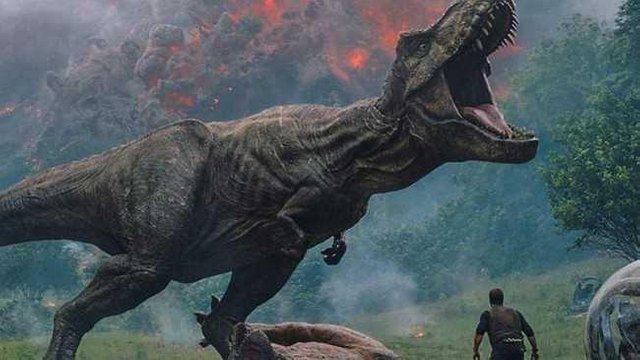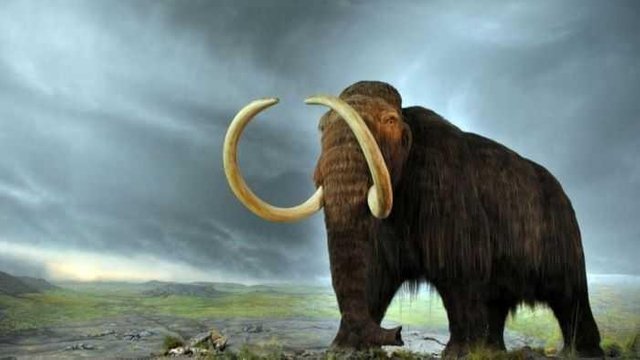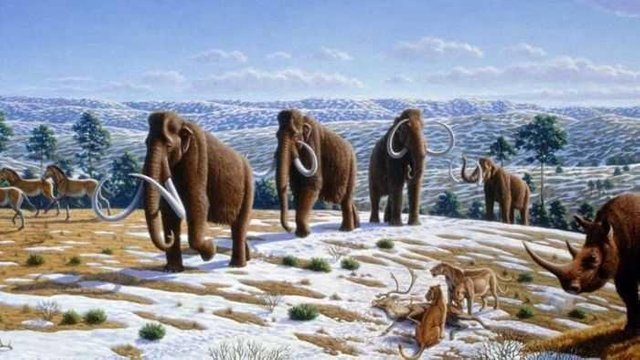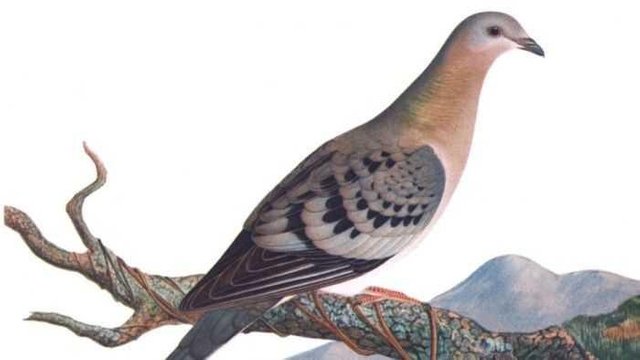Ancient Species Can Be Revived ???

The circulation of news that scientists have created a hybrid white rhino embryo has given new hope to those who fear the northern white rhino is extinct.
But can scientists generate other extinct and more ancient species - and if so, should they be done?
The study to save the northern white rhinoceroses uses IVF technology (tube baby), but the method is unlikely to work on animals that have been extinct for thousands of years.
Swedish science journalist Torill Kornfeldt travels the globe researching the science of "warding extinction" for his book The Re-Origin Of Species (re-bringing back species).
He said Jurassic Park showed what the process should look like: scientists discovered an ancient mosquito trapped in tree fossils, taking dinosaur blood from a perfectly preserved specimen, then using that DNA to clone the extinct reptile.
Unless The Researchers Have Tried This, But It Does Not Work.
"They Did'nt Find Any Dinosaur DNA, Not Did They Find Mosquito DNA," Kornfeldt said.
He also explained that well-preserved DNA has decreased over time.
Mammoth Living Opportunity
So maybe the dinosaurs could not be revived (just like the Jurassic-era mosquitoes) but what about the extinct creatures a bit newer, like Mammoth ?
"The Mammoth was complicated, predicting that humans could see ancient elephants alive in 15 years, or never at all. The research still depends on some unprecedented scientific breakthrough - but still possible". Kornfeldt Said
Even if the breakthrough occurred, the creatures that scientists created would not be the Mammoth clones. Cloning is possible only if there are tissue samples from live animals, or "new ones". Mammoth have been extinct for thousands of years, so although there is still DNA in them, "it's really degraded".
Scientists can collect the DNA together on a computer by comparing it with living species of relatives, such as the Asian elephant.
"Like looking at the cover when you make a pictorial puzzle, you see all the pieces and see where they are headed in. You do not have a complete chromosome in the lab tube, but you have a digital file". Kornfeldt Said.

 The Last Hairy Mammoth Died About 4000 Years Ago.(Wikimedia Commons: FlyingPuffin)
The Last Hairy Mammoth Died About 4000 Years Ago.(Wikimedia Commons: FlyingPuffin) The next step is to identify the genetic differences between the elephant and the ancient elephant-the elephant that determines animal fur, for example - and then cultivates the elephant genes to make it more like an ancient elephant.
"You basically make elephants like Mammoth, or Animals that look like the Mammoth". Kornfeldt Said.
Habitat selection
Once you have a herd of furry Mammoth, the next problem is where to place them.
Kornfeldt traveled to Siberia, where the researchers tried to recreate the habitat of an Mammoth era.
"This is a very rich ecosystem - in some ways, it is comparable to the savanna of Africa.There are many animals in this pasture, and then when the Ice Age ends and when humans come this ecosystem changes.Many animals, including Mammoth, disappear and the fields grass replaced by forests". Kornfeldt said.
Without access to the surviving, hairy elephant, researchers have an unlikely substitute species.
They have an old Soviet-era tank that they drive and destroy trees One function of an ancient elephant, just like an elephant, is to tear down a tree so that the grass has a place to grow.

 The ancient habits of feathered elephants began to disappear at the end of the Ice Age. (Wikimedia Commons: Mauricio_Antón)
The ancient habits of feathered elephants began to disappear at the end of the Ice Age. (Wikimedia Commons: Mauricio_Antón) Example The Spirit Of Flying To The Moon
Even if creating a furry creature like an ancient elephant is a possibility, why should we bother?
In promoting the 1969 US exploration to the public, John F Kennedy talked openly about the benefits of taking on a big challenge:
"We chose to go to the Moon in this decade and do other things, not because they are easy, but because they are difficult, because that goal will serve to regulate and measure the best of our energy and skills.
Kornfeldt said cloning Mammoth could have similar benefits to the Apollo program.
"We don't go to the Moon to collect gold or something, we do it only to go through the process - and in the same way, through the process of looking for something like this has very good value in it.This makes the researchers more aware of how various genes work and what are their functions, what genes you can change and what genes you can not change, and how they can co-exist ". Kornfeldt said.
There Are More Practical Reasons To Dispel Extinction.
Some researchers seek to revive extinct species to rebalance ecosystems that suffer because of their loss.
In 1914, the last passenger dove died in captivity, but only 50 years before, the bird is likely to be the most numerous bird in the world.
"This is a dove that lives in a dense flock, so solid, there is a description of" the sky darkened and the pigeon's faeces fell like snow. At very irregular intervals they will come in and disturb everything. The tree species will adapt to this, and you will have the rebirth of new seeds and shoots." Kornfeldt said.

 Hunting and deforestation in the 1800s destroyed passenger doves. (WikimediaCommons: HayashiandToda)
Hunting and deforestation in the 1800s destroyed passenger doves. (WikimediaCommons: HayashiandToda) Improvements in communications and transportation in the US mean passengers flocks can be traced, hunted and meat transported, and by that time, passenger pigeon is the cheapest meat available in the US.
Popular Pigeon Passenger Degenerate, Never Recovered.
Kornfeldt said the pigeon extinction sowed the seeds of the modern environmental movement.
"The idea that you could lose something so abundant really awakens people to the concept of extinction," Kornfeldt Said.
Regardless of the purpose for laboratory specimens, researchers are working to bring back millions of passenger pigeons to return the species to its place in the North American ecosystem.
"They want these distracting birds to roam the US again," Kornfeldt said.
Every extinction vs. conservation
The big question is whether we should spend money to ward off extinction or conservation.
Kornfeldt said he asked that question to any extinction prevention researchers he encountered.
"They all agree that if the choice is clear between these two alternatives you should try to save the species that are here now, because that will always be a better solution, but that is seldom an option." Kornfeldt said.
Passenger pigeons are one example of species whose awakening can have tangible benefits to the environment.
"The fact that this species is extinct threatens many other species, and urges those closer to extinction, bringing this species back may be like reviving and revitalizing some of these dying ecosystems."
...........................THANK YOU..........................
###### ALL RIGHT RESERVED | [AXELLE](https://steemit.com/@axelle) | © COPYRIGHT 2018